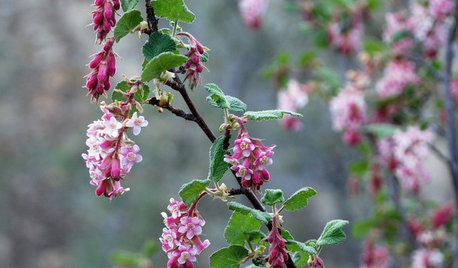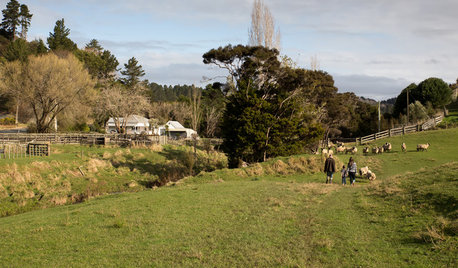Granny Smith ripening?
beeman_gardener
12 years ago
Related Stories

FARM YOUR YARDIf You Have Room for Only One Fruit Tree ...
Juice up a small garden with one of these easier-care or worth-the-effort fruit trees for a mild climate
Full Story
DECORATING GUIDESCrisp, Fresh: Go for Green Apples
On the Walls or Au Natural, Green Apples Pack a Decorative Bite
Full Story
HOUZZ TOURSHouzz Tour: Lola Nova's Small Space, Big Life
Tour the Blogger's Heartfelt Oregon Home
Full Story
GARDENING GUIDESGreat Design Plant: Ribes Malvaceum
Plant pink chaparral currant for graceful winter tassels and an excuse to make black currant tarts
Full Story
ECLECTIC HOMESHouzz Tour: An Eclectic Sanctuary Shows a Couple's True Colors
Travel takeaways, religious totems, thrift store finds and unusual compositions personalize a Melbourne home
Full Story
HOUZZ TOURSMy Houzz: Their Own Little Slice of Country Life
A family makes its dream come true by moving into a century-old home in the rolling hills of New Zealand
Full Story
COLORColor of the Week: 10 Tangy Ways with Citrus Green
Add some zest to your home with a little — or a lot of — lively lime
Full Story
KITCHEN DESIGNKitchen of the Week: Grandma's Kitchen Gets a Modern Twist
Colorful, modern styling replaces old linoleum and an inefficient layout in this architect's inherited house in Washington, D.C.
Full Story
MOST POPULARThe Unexpected Color That Goes With Everything
Move over, beige. Green is staking its claim as the freshest neutral around
Full Story
DECORATING GUIDES5 Things Every Home Should Have
A designer shares his top 5 style rules to take any room from boring to bold
Full StoryMore Discussions








fruitnut Z7 4500ft SW TX
ganggreen
Related Professionals
La Marque Landscape Architects & Landscape Designers · Milford Landscape Contractors · Arlington Landscape Contractors · Bedford Landscape Contractors · Dedham Landscape Contractors · El Mirage Landscape Contractors · Englewood Landscape Contractors · Franklin Landscape Contractors · Longmont Landscape Contractors · Mastic Beach Landscape Contractors · Northport Landscape Contractors · Paterson Landscape Contractors · Pompano Beach Landscape Contractors · Ridgewood Landscape Contractors · Rio Linda Landscape Contractorsalan haigh
beeman_gardenerOriginal Author
ray718
applenut_gw
alan haigh
glenn_russell
alan haigh
creekweb
applenut_gw
alan haigh
oregonwoodsmoke
tammypie
zelda77
applenut_gw